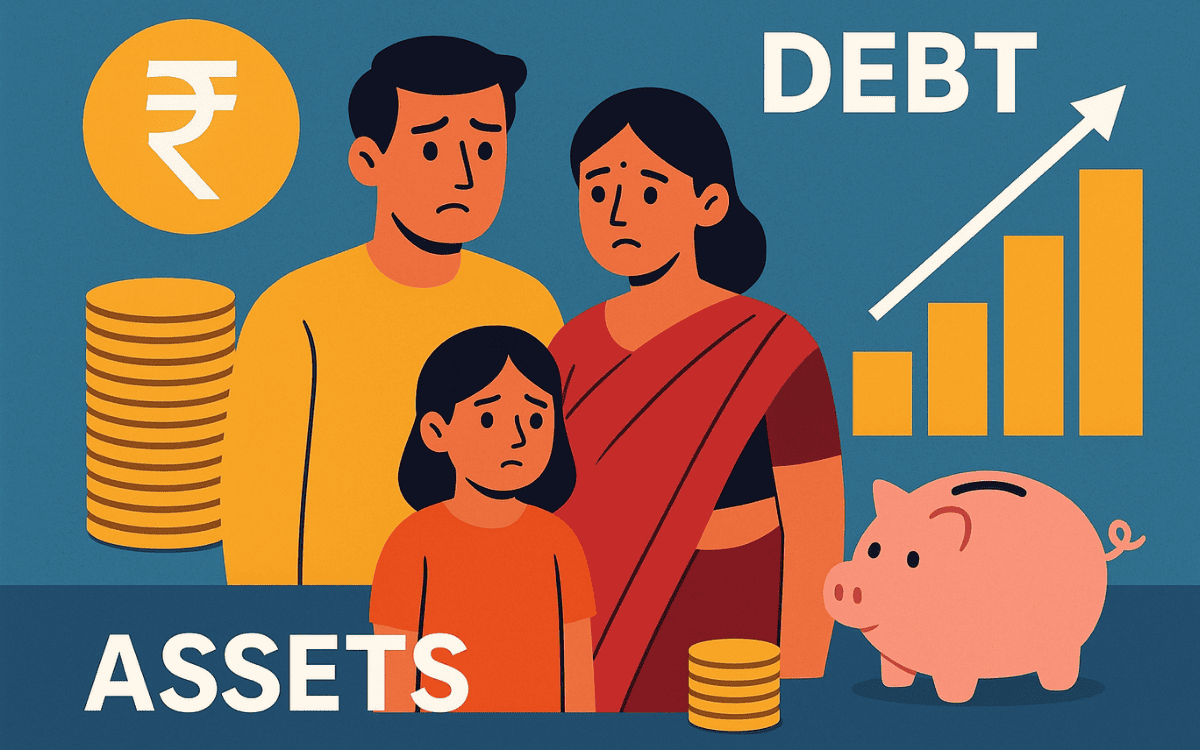Indian households are borrowing faster than they are building assets — a trend revealed by the most recent data from the Reserve Bank of India (RBI). The shift, experts say, could raise long-term financial stability concerns for both families and the broader economy.
According to RBI figures, borrowing by households has accelerated significantly. Much of this growth appears to be driven by consumption-linked lending — including personal loans, credit-card debt and unsecured borrowing — rather than investment in meaningful assets. In contrast, the pace of asset accumulation has been slower, leaving many households with rising liabilities and relatively stagnant financial net worth.
📈 Rising Debt, Sluggish Asset Growth
RBI’s data shows that household debt as a share of GDP is now reaching elevated levels, driven in large part by increased retail borrowing. Meanwhile, households are not keeping pace on the asset side: savings, investment flows and accumulation of productive assets have not expanded at a matching rate.
This divergence underscores a shift in household behaviour: more credit is going into consumption or short-term spending, rather than assets such as property or long-term financial investments. Analysts point out that borrowing for non-asset creation purposes heightens risk, especially if income growth fails to keep pace.
🧮 Why It Matters
When debt grows without a corresponding increase in assets or income, the risk of financial strain rises. Instead of loans being used for asset building — which can yield future returns and net worth growth — more borrowing is being used just to maintain living standards or meet everyday expenses. That dynamic puts pressure on future savings and can reduce financial resilience.
The RBI has flagged this trend in its financial stability reports, noting that while the overall system remains stable, the composition of household borrowing is increasingly tilted toward riskier categories — a point of concern given rising interest-rates and potential income pressures.
🔍 What Lies Ahead?
For households, the takeaway is clear: managing the balance between debt and asset accumulation is critical. Borrowers should prioritise loans that can help build assets or income, rather than those used purely for consumption. Additionally, maintaining an emergency buffer, limiting unsecured debt and focusing on long-term investment remain key.
On the policy side, the RBI and other authorities will likely keep a close eye on credit growth trends. Measures to regulate credit flows, incentivise savings and strengthen the asset-building capacity of households may become more prominent.
In short — while borrowing per se is not bad, its purpose and context matter. Without matching asset growth, families risk weaker financial foundations ahead of economic ups and downs.
